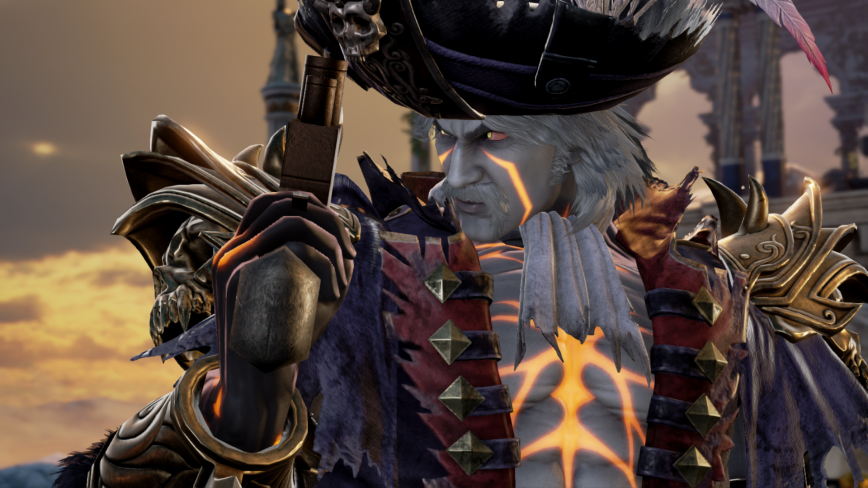
Ironically, SoulCalibur VI’s skimpiest modes are its most basic. They ensure that duels remain dynamic but still up-close and personal. All three of these tactics work within the mechanics of a stand-up fight, instead of being at odds with them.
#Soulcalibur vi website series#
The new elements-Soul Charging, Reverse Edge, and Lethal Hits-that SoulCalibur VI introduces to the series are all high-risk maneuvers that can leave you defenseless, but the reward when executed just right yields some of the most devastating maneuvers in the game.
#Soulcalibur vi website how to#
SoulCalibur is back to being a game of clashing blades-about you capitalizing on a whiffed attack, figuring out if your next move will leave you open to being brutalized by your opponent, and how to mitigate that possibility, as opposed to “whoever hits hardest first wins.” The innate satisfaction of swordfighting is brought to the forefront again. The series had been slowly falling into a trap of bigger and flashier attacks at the expense of tension, and this game finds a nice balance. This would all be for naught if the actual fighting wasn’t up to snuff, but SoulCalibur is almost peerless in that regard. The story being told is rather sturdy, with a surprising amount of real, fascinating history and mythology sprinkled in for good measure, but its presentation still leaves much to be desired, with none of the striking artwork that keeps Soul Chronicle engaging through its text-heavy stretches. This is also the only area of SoulCalibur VI where players who are new to the series get anything resembling a tutorial, but new and complex concepts still only barely sink in before the game has moved on to something totally unrelated. Stages don’t have enough creative variation, and the RPG elements-earning new weaponry, XP, health recovery, and so on-are undercooked. More often than not, you face nameless goons instead of major players.

Fights here are painfully anticlimactic given the extensive lead-in and load times. This mode is very much SoulCalibur VI’s version of the Weapon Master and Chronicles of the Sword modes from the previous games in the SoulCalibur series, and it loses out by tipping the balance too far toward the text than the gameplay. The most expansive mode, however, is Libra of Souls, where players get to craft their own fighters from the game’s robust-if slightly haphazard-Creation Mode, and take them on an RPG-style romp throughout Eurasia in an attempt to cure themselves of a curse caused by Soul Edge. (Anything not explained in Soul Chronicle is elaborated upon in the Library, where extra tomes of backstory unlock as you play in every mode.)

The stories themselves aren’t exactly to the level of, say, Romance of the Three Kingdoms, but they go a very long way toward humanizing the characters, endearing them to players in ways the series hasn’t bothered to in years, and making the relationships between these characters a little bit easier to parse out.

And the most engaging of those modes is Soul Chronicle, where the major events leading up to the knight Siegfried taking control of the cursed blade are recounted on a massive timeline.Īll of SoulCalibur VI’s warriors see their individual stories briefly told in relation to how they wound up searching for Soul Edge, and through a combination of text and rather beautiful watercolor-meets-pencil-sketch artwork, with major plot points punctuated by full-on fights. The much vaunted “tale of souls and swords, eternally retold” has been taken back to the drawing board, with not one, but two full-fledged single-player story modes dedicated to cohesively telling the story of the game’s 21 warriors, and their role in attempting to reclaim or destroy the fabled evil sword Soul Edge. To wit, the most hearty and involving parts in SoulCalibur VI are all in aid of weaving the often splintered and frayed SoulCalibur narrative together as elegantly as possible. SoulCalibur VI, then, isn’t so much a return to form than a much-needed refocus on the things that made the series special to begin with, dialing back the more ridiculous ideas from over the years, while cultivating the ones that worked. With the SoulCalibur series, the breaking point came right around the time we all had to pretend that having Darth Vader fighting an undead pirate wasn’t weird as hell. When it comes to its bread-and-butter franchises, Bandai Namco generally operates on a principle of “If it ain’t broke, don’t fix it.” There’s nothing inherently wrong with that approach, but the Japanese video game development company and publisher does have a rather conspicuous habit of bringing just one too many non-sequitur elements to the table in an attempt to mix things up for players.


 0 kommentar(er)
0 kommentar(er)
